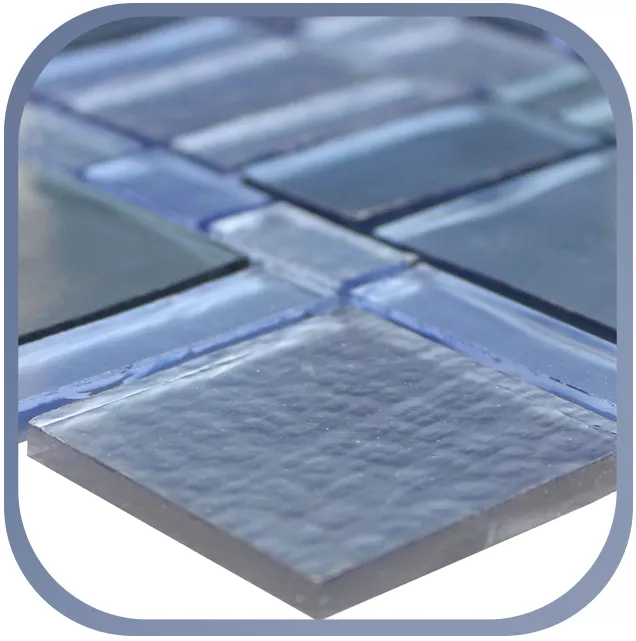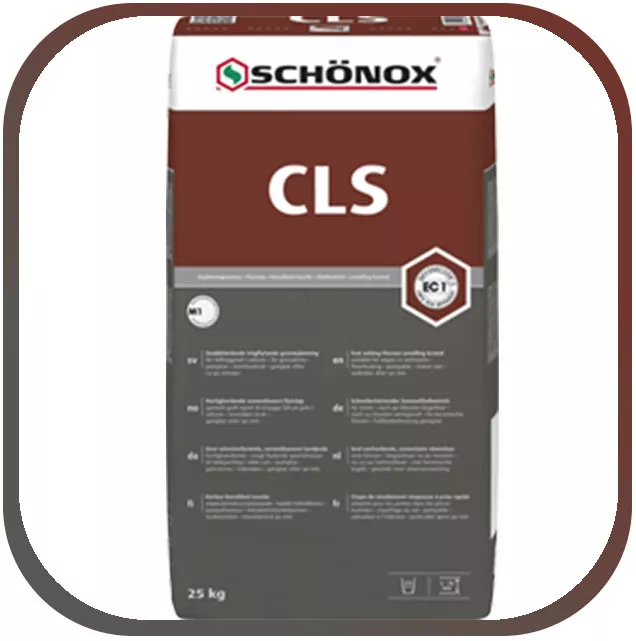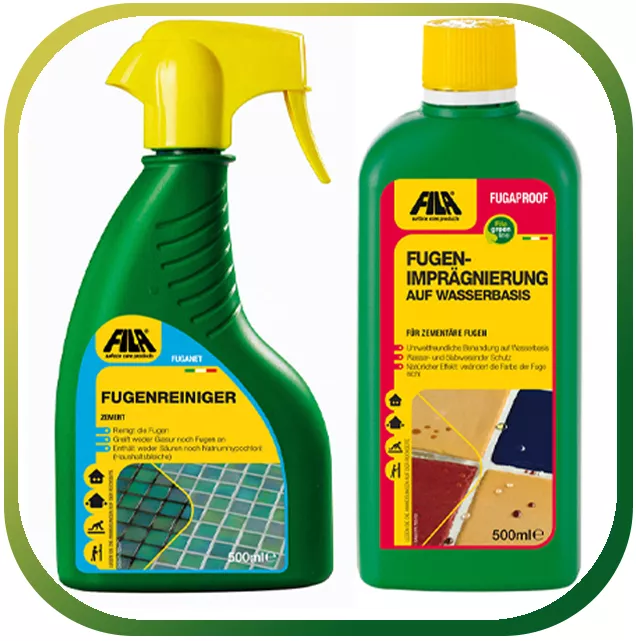Tile tools at a glance
In principle, tilers use the following tools for tiling in order to be able to work properly:
- Notched spatula:
To properly lay tiles, repair tiles or lay mosaics, it is important that the tile adhesive is applied evenly to the substrate. With the notched trowel, the adhesive is combed through vigorously on the laying surface and distributed so that an evenly thick application is achieved. The larger the format of the tiles is chosen and the stronger the tile profile the back, the higher the tooth depth of the notched trowel should be obsessed. The appropriate toothing of the tile tools is often indicated on the packaging of the mortar.
- Joint crosses:
Although tiles slip away too quickly after knocking on a modern tile mortar, it is nevertheless advisable, especially on smooth surfaces such as old tiles, metal or Plastic, to work with so-called joint crosses. With the help of cross spacers, it is also ensured that all joints are the same width as their predecessors when repairing tiles.
- Spirit level:
Tools for tiling can of course also come from other craft areas. Just like the spirit level, which is helpful for straightening tiles horizontally and vertically. This is particularly important when repairing tiles.
- Tile house rail:
One of the most important tools for tiling is the tile house rail. A tile house rail is used to set the amount at which a tile is to be scratched with the glass cutter. You can work more precisely with the tile house rail than with positioning angles, which can alternatively be used as tile tools.
- Square timber and tile breaking pliers:
These tools for tiling are absolutely recommended when laying mosaics, repairing tiles and laying tiles. In order to be able to break tiles accurately, a hard surface is required. A square timber is ideal. The tile is placed with the scored line on the edge of the squared timber and pressed down with a strong jerk. In the case of large-area tiling, it is worth purchasing a pair of tile breaking pliers so that you can easily break the tiles at the scratched areas. Since repairing tiles is not easy, caution should be exercised during this work.
- Tile cutting machine:
In particular, stoneware tiles and other harder tiles can often only be made using special ones Tools for tiling like a tile cutting machine can be easily cut to size. However, the purchase is only worthwhile if larger projects relating to laying tiles or laying mosaics are planned.
- Tile punching pliers:
If tiles are to be "nibbled on" milimeter by millimeter from the edge with tile tools, you need a "parrot fork", like a tile punching pliers becomes. These tile tools can break out recesses for sockets, plumbing connections and the like, which can be very helpful when laying tiles and laying mosaics.
- Joint rubber:
For the final joint, especially when laying mosaics, tools for tiling are particularly helpful. Tile tools such as the joint rubber are essential. The mortar must be optimally worked into the joints, especially when laying mosaics. A joint rubber can also be quite helpful when repairing tiles.
In principle, tilers use the following tools for tiling in order to be able to work properly:
- Notched spatula:
To properly lay tiles, repair tiles or lay mosaics, it is important that the tile adhesive is applied evenly to the substrate. With the notched trowel, the adhesive is combed through vigorously on the laying surface and distributed so that an evenly thick application is achieved. The larger the format of the tiles is chosen and the stronger the tile profile the back, the higher the tooth depth of the notched trowel should be obsessed. The appropriate toothing of the tile tools is often indicated on the packaging of the mortar.
- Joint crosses:
Although tiles slip away too quickly after knocking on a modern tile mortar, it is nevertheless advisable, especially on smooth surfaces such as old tiles, metal or Plastic, to work with so-called joint crosses. With the help of cross spacers, it is also ensured that all joints are the same width as their predecessors when repairing tiles.
- Spirit level:
Tools for tiling can of course also come from other craft areas. Just like the spirit level, which is helpful for straightening tiles horizontally and vertically. This is particularly important when repairing tiles.
- Tile house rail:
One of the most important tools for tiling is the tile house rail. A tile house rail is used to set the amount at which a tile is to be scratched with the glass cutter. You can work more precisely with the tile house rail than with positioning angles, which can alternatively be used as tile tools.
- Square timber and tile breaking pliers:
These tools for tiling are absolutely recommended when laying mosaics, repairing tiles and laying tiles. In order to be able to break tiles accurately, a hard surface is required. A square timber is ideal. The tile is placed with the scored line on the edge of the squared timber and pressed down with a strong jerk. In the case of large-area tiling, it is worth purchasing a pair of tile breaking pliers so that you can easily break the tiles at the scratched areas. Since repairing tiles is not easy, caution should be exercised during this work.
- Tile cutting machine:
In particular, stoneware tiles and other harder tiles can often only be made using special ones Tools for tiling like a tile cutting machine can be easily cut to size. However, the purchase is only worthwhile if larger projects relating to laying tiles or laying mosaics are planned.
- Tile punching pliers:
If tiles are to be "nibbled on" milimeter by millimeter from the edge with tile tools, you need a "parrot fork", like a tile punching pliers becomes. These tile tools can break out recesses for sockets, plumbing connections and the like, which can be very helpful when laying tiles and laying mosaics.
- Joint rubber:
For the final joint, especially when laying mosaics, tools for tiling are particularly helpful. Tile tools such as the joint rubber are essential. The mortar must be optimally worked into the joints, especially when laying mosaics. A joint rubber can also be quite helpful when repairing tiles.






































































